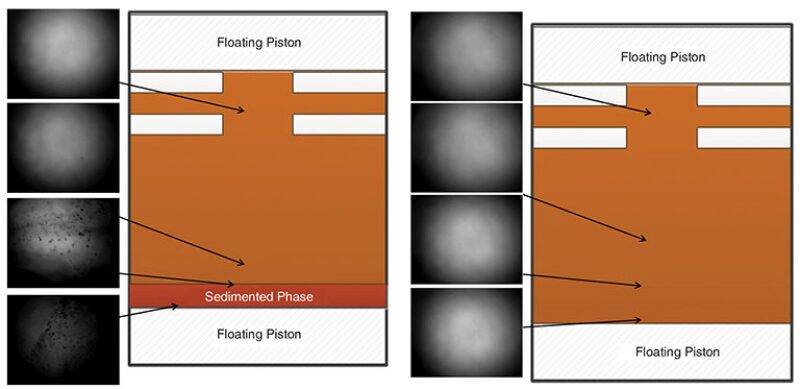During primary oil production, when the thermodynamic conditions within the well tubing lie inside the asphaltene-deposition envelope (ADE) of the produced fluid, flocculated asphaltene particles could start being deposited on the tubing wall, causing a restriction in the tubing inner diameter that results in loss of production. This paper presents a methodology that begins by determining the ADE in the laboratory. Moreover, asphaltene-deposition rates for the tubing conditions can be measured using high-pressure/high-temperature coaxial-cylinder technology.
In-Situ Asphaltene Testing
At some thermodynamic states, asphaltenes exhibit a behavior called flocculation—that is, asphaltene particles or micelles aggregate or flocculate into larger particles or flocs. The locus of all thermodynamic points in a phase diagram at which flocculation occurs is called the ADE. Accurate measurement of asphaltene solubility at in-situ conditions inside the ADE is extremely difficult.


